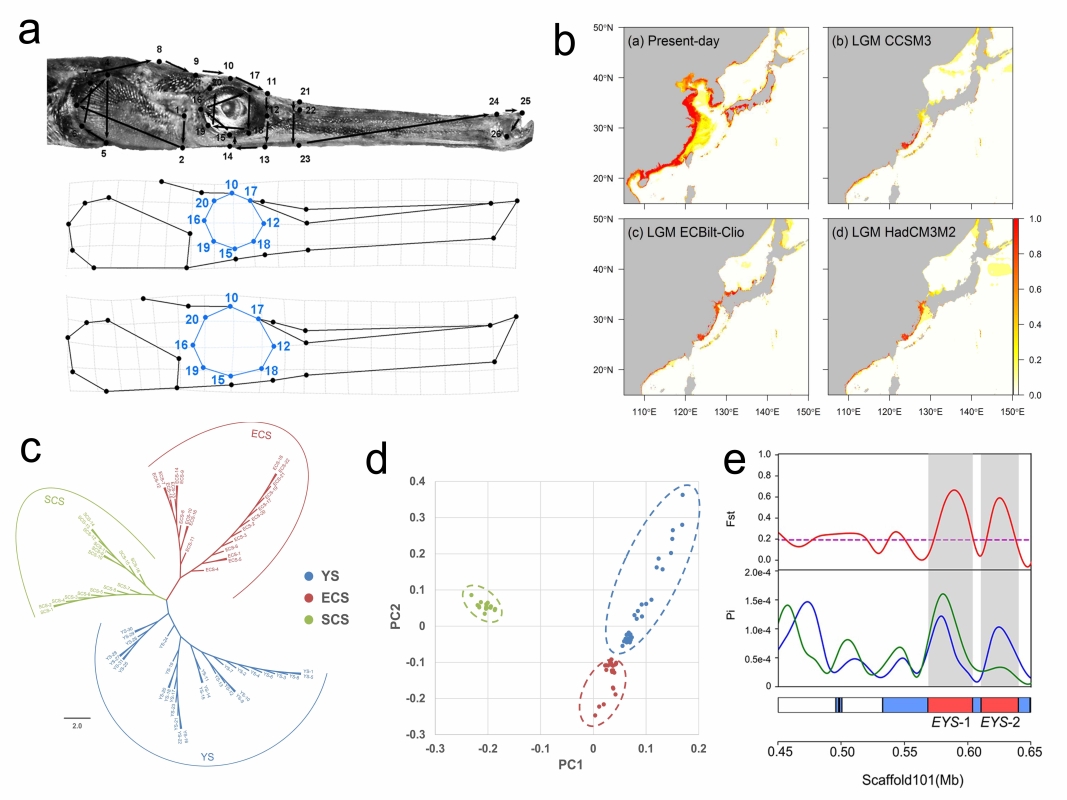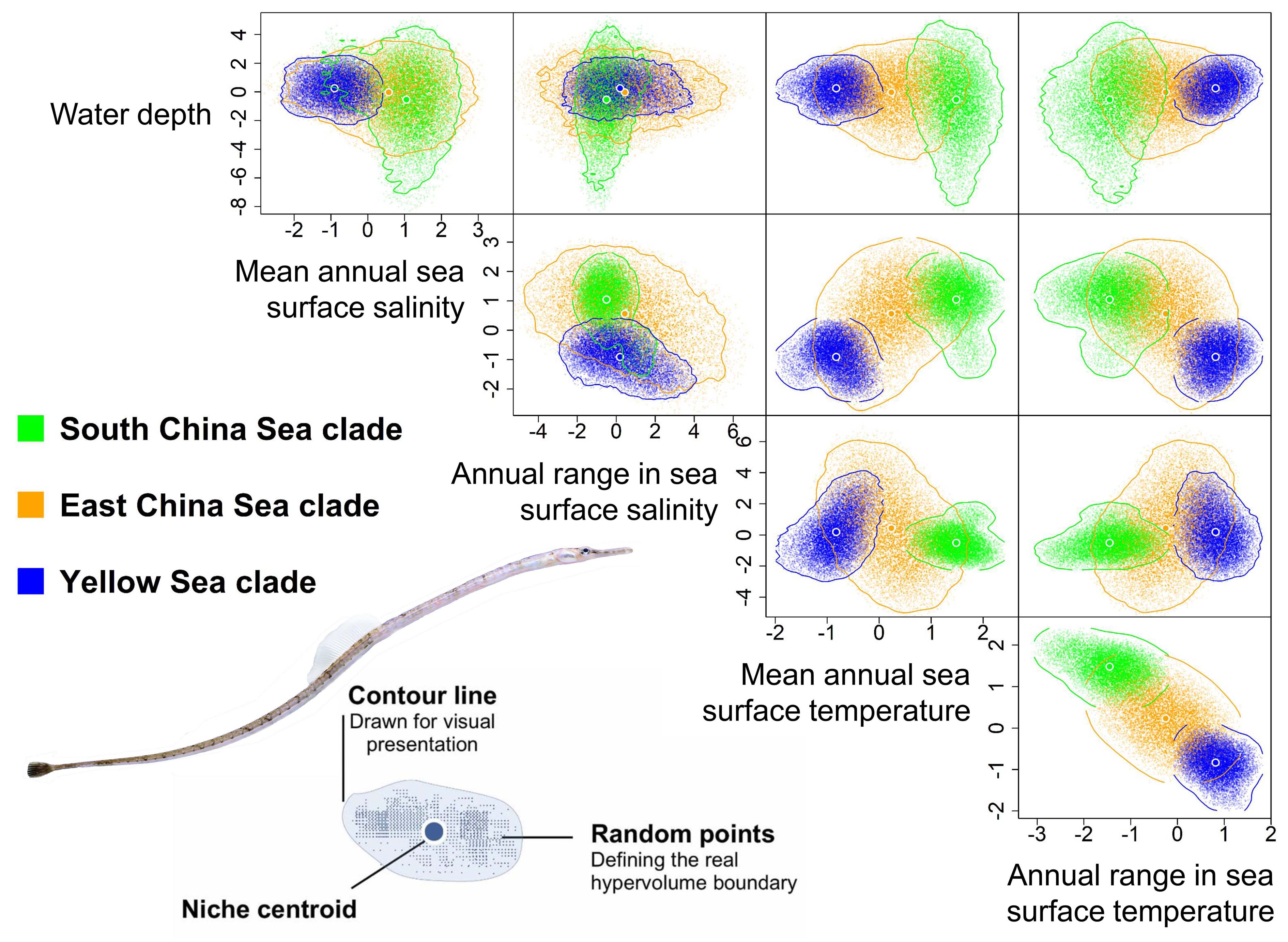Unlike the terrestrial biota, marine species with planktonic larvae can maintain large population sizes, together with the weak geographic barriers in the vastness of seas, they often show high-level gene flow. However, the highly-connected marine habitats have nurtured extremely rich biodiversity. Therefore, marine organisms challenge the classical theories of local adaptation and speciation, dubbed as the “marine speciation paradox”.
Recently, researchers led by Prof. LIN Qiang from the South China Sea Institute of Oceanology of the Chinese Academy of Sciences revealed how ecological specialization arises in widely distributed marine species with integrated analysis of morphological, genetic and ecological data.
This work was published in Diversity and Distributions with the title “Exploring ecological specialization in pipefish using genomic, morphometric, and ecological evidence” on May 4th, 2021.
In this study, we investigated the cranial morphology, genetic structure and ecological niche of S. schlegeli along Chinese seashores to reveal their phylogeographical patterns.
Ecological niche characterization with hypervolumes indicated that the three clades diverge in their realized niches across their distribution range, and the genetic results also showed three distinct clusters that represent three geographical lineages. Habitat suitability projections for this species showed a clear geographical separation between south and north populations during the LGM, which may led to the genetic split between ECS-YS and SCS lineages.
In addition, identification of genes under natural selection is important to determine the genetic basis of local adaptation affecting fitness traits development and population divergence, and many key genes are involved in growth (pax7), cold adaptation (csde1) and eye development (eys, rx3).
This study will help to better understand the differentiation of marine fish populations, and also provide new insight into the studies of distribution, dispersal, and speciation of marine species.
The study was supported by the National Natural Science Foundation of China, the Key Special Project for Introduced Talents Team of Southern Marine Science and Engineering Guangdong Laboratory (Guangzhou), and the Guangdong Special Support Program of Leading Scientific and Technological Innovation.

Figure 1. Population divergence pattern of different geographic populations of S. schlegeli
Figure legends: a. geometric morphometric analysis of different pipefish populations;b. binary predictions of habitat suitability for seaweed pipefish under the present day and Last Glacial Maximum;c-d. genetic relationships and population structure of different pipefish populations;e. genome-wide selective sweep analysis of the populations from different regions
F

Figure 2. Niche differentiation among geographic populations of S. schlegeli
For further reading, please refer to: http://doi.org/10.1111/ddi.13286
Author’s information: LIN Qiang (linqiang@scsio.ac.cn)
WANG Xin (wangxin2014@scsio.ac.cn)
